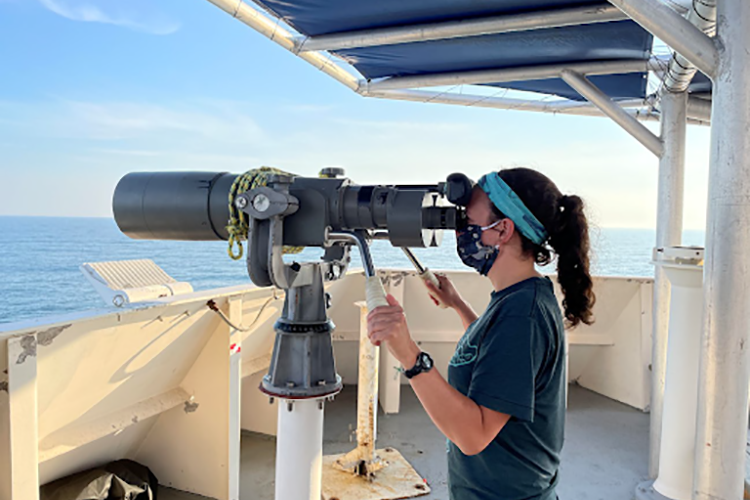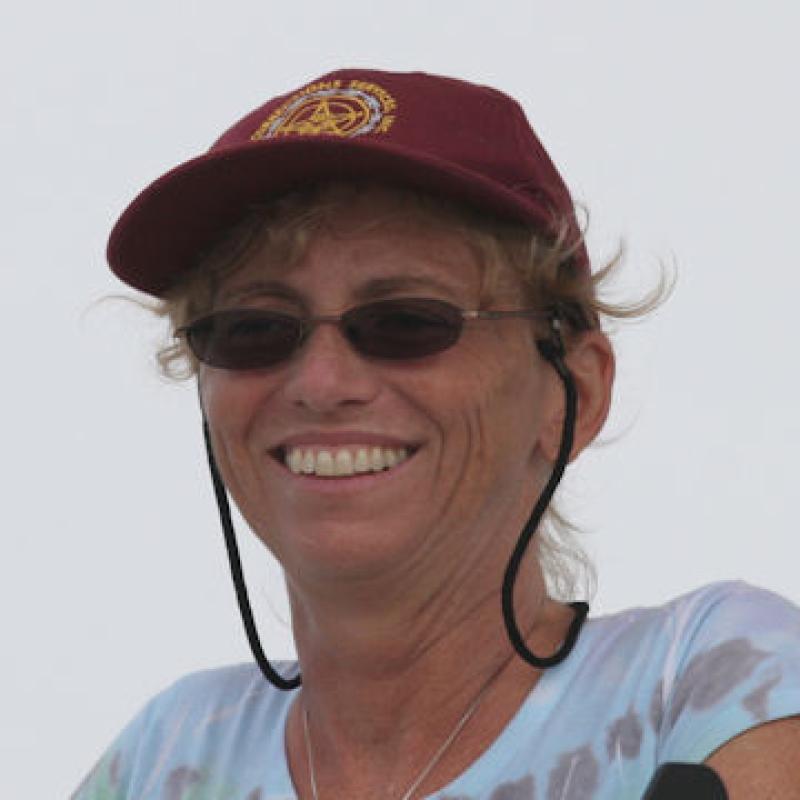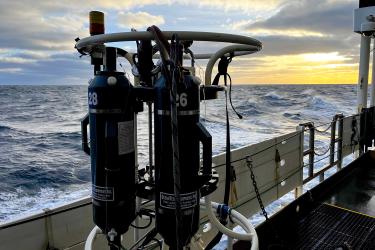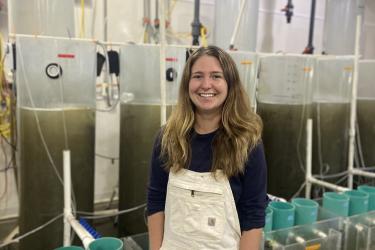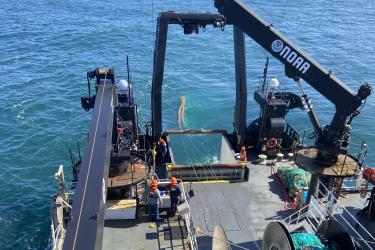This cruise aboard the NOAA Ship Henry B.Bigelow, supports the Atlantic Marine Assessment Program for Protected Species (AMAPPS), a partnership with the Bureau of Ocean Energy Management, the U.S. Fish and Wildlife Service, and the U.S. Navy.
The information we gather provides seasonal abundance estimates for marine mammals, turtles, and seabirds in the western North Atlantic Ocean. Because our data gathering occurs over such a large area and includes many different kinds of sampling, we can use it to develop models and other tools that incorporate environmental habitat characteristics into abundance estimates.
This year, we’ll be at sea in two legs: from June 16 through July 11 and again from July 27 through August 23. We’ll be collecting:
- Data needed to estimate the distribution and abundance of marine mammals, sea turtles, and seabirds
- Vocalizations made by cetaceans
- Data needed to estimate the distribution and relative abundance of plankton
- Hydrographic and meteorological data
- Biopsy samples and photo-identification pictures of cetaceans, when possible
During this time there are also other large-scale NOAA Fisheries surveys going on off the Southeastern United States, so we are coordinating our work closely. A survey similar to ours is underway on the NOAA Ship Gordon Gunter, and an aerial survey is occurring aboard the NOAA Twin Otter aircraft.
The joint goal is to cover all U.S. Atlantic waters to estimate the abundance of as many marine mammals as possible to update the Atlantic marine mammal stock assessment reports
Week 1
Day Shifts and Night Shifts
Our survey on the Bigelow uses some methods that need daylight and good sighting conditions, and some methods that don’t.
During the daytime (6 a.m. to 6 p.m.) we focus on data collection that needs good visual sighting conditions because people are looking for animals in the water.
There are four teams. Two of these use high-powered binoculars called “big eyes” to search for marine mammals, sea turtles, and large fish. Another team watches for seabirds, and yet another team listens for vocalizing animals that we record using hydrophones—underwater microphones—trailing behind the ship. This kind of acoustic monitoring is called “passive” because all it does is listen, rather than sending out sound.
At night, we focus more on oceanography and plankton operations. We collect plankton data using a video plankton recorder—a kind of underwater microscope that records images of what it “sees”—and take samples from the water using fine-mesh nets called “bongos” and a frame net.
During our first week, we avoided tropical storm Claudette. Weather conditions allowed the marine mammal teams using high-powered binoculars to work for 4 days, surveying 758 km (470 mi).
The seabird team searches with the unaided eye. They were able to work during worse sighting conditions than the mammal teams and surveyed for 944 km (586 mi).
Because the acoustic array that trails behind the ship is 300 m (984 ft) long, it is not deployed when the ship is in shallow waters. In waters where we could operate this week, the passive acoustic team monitored vocalizations for about 561 km (348 mi).
Everyone, crew and scientists alike, has worked well together to get everything working. We are now in the calmer routine stage, ready for the next 5 weeks.
What Have We Seen and Heard?
Marine Mammal and Turtles
The most commonly detected species were common dolphins and bottlenose dolphins (both inshore and offshore). We detected the long–diving beaked whales and pygmy/dwarf sperm whales in deeper waters in and around the canyons located on the continental shelf slope. We even saw a couple of dozen sea turtles. One of the large schools of striped dolphins ran close to the ship, which brought out many folks to check out the animals.
Passive Acoustics
The passive acoustics team started the cruise on a great note, deploying the array without a hitch and recording sounds within minutes. As soon as the array was on, they could hear dolphins. Over the course of 3 days in deeper waters, we heard dolphin, sperm whale, and beaked whale activity. They've had 58 detections.
The array was tucked away while the ship was surveying shallower waters inshore. Nevertheless, the team kept busy. They joined the visual sighting teams looking through the big eyes. Once the ship was further offshore, the passive acoustic array was redeployed.
Seabirds
The seabird survey was not affected much by sighting conditions, so was uninterrupted throughout this week. Density and abundance was low nearshore, dominated by gulls and terns. Farther offshore, the great shearwater was the most common species, particularly along the shelf break. On June 19, 95 percent of the birds seen were great shearwaters, most of them moving in a northwesterly direction.
Wilson’s storm-petrel, although widely distributed, were more abundant farther offshore. Among the sighting highlights were a lost male red-winged blackbird that briefly visited the ship on June 18, and an immature Atlantic puffin, a non-breeding bird that was summering in the winter range.
Night Operations
|
Images of live jellyfish, Pelagica noctiluca, captured by the video plankton recorder. They are about 1.5 cm in size. Credit: NOAA Fisheries. |
|
We completed several successful video plankton recorder tows along the shelf slope. When the ship moved inshore, we shifted to collecting plankton using bongo nets. We sampled a line of 8 to 9 stations every 5 nautical miles during each watch.
These samples will be used to describe early summer ichthyoplankton—the eggs and larvae of fish that settle in with other plankton at this early stage of development—and oceanographic conditions in the Mid–Atlantic Bight. These plankton abundance estimates also help calibrate the higher frequencies of the active acoustic arrays on the Bigelow.
